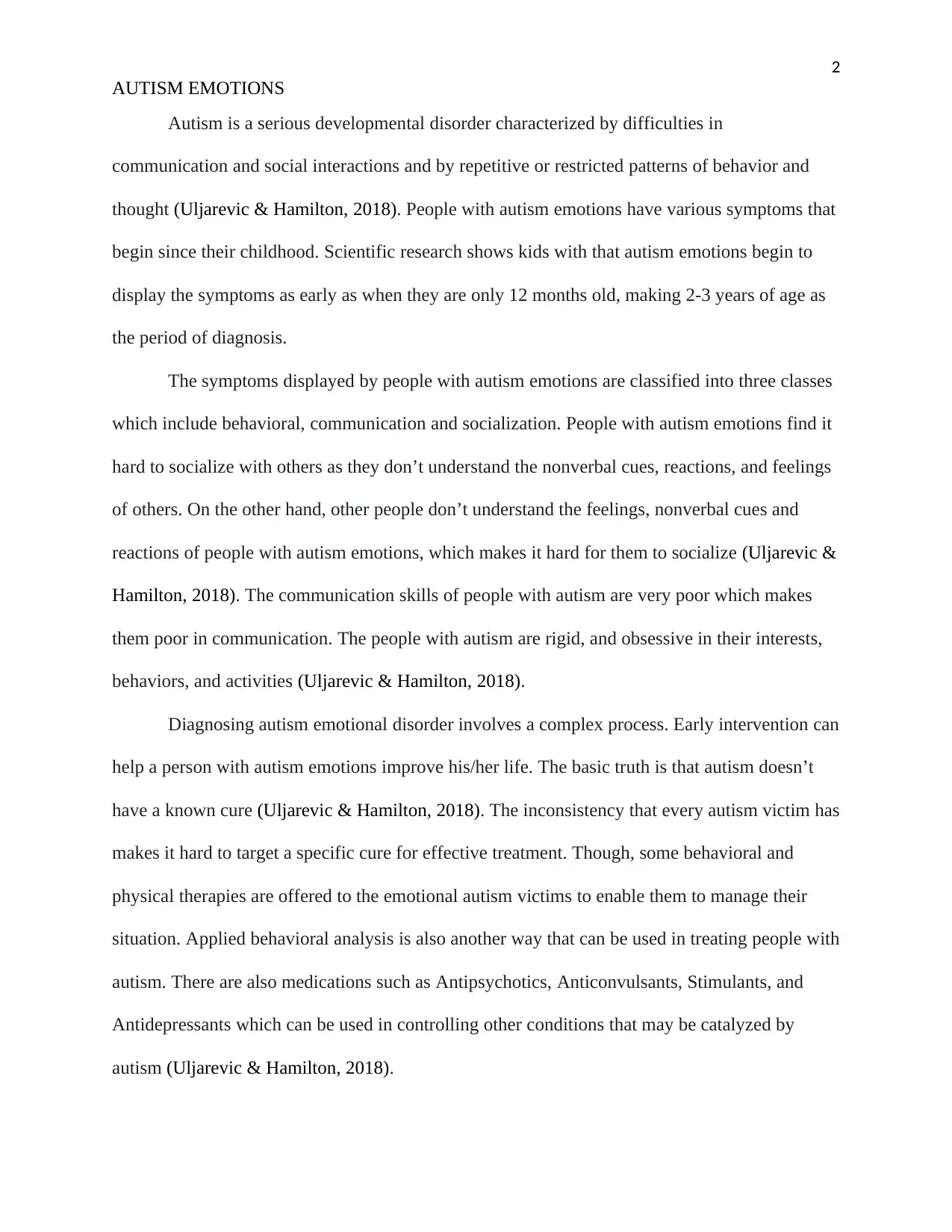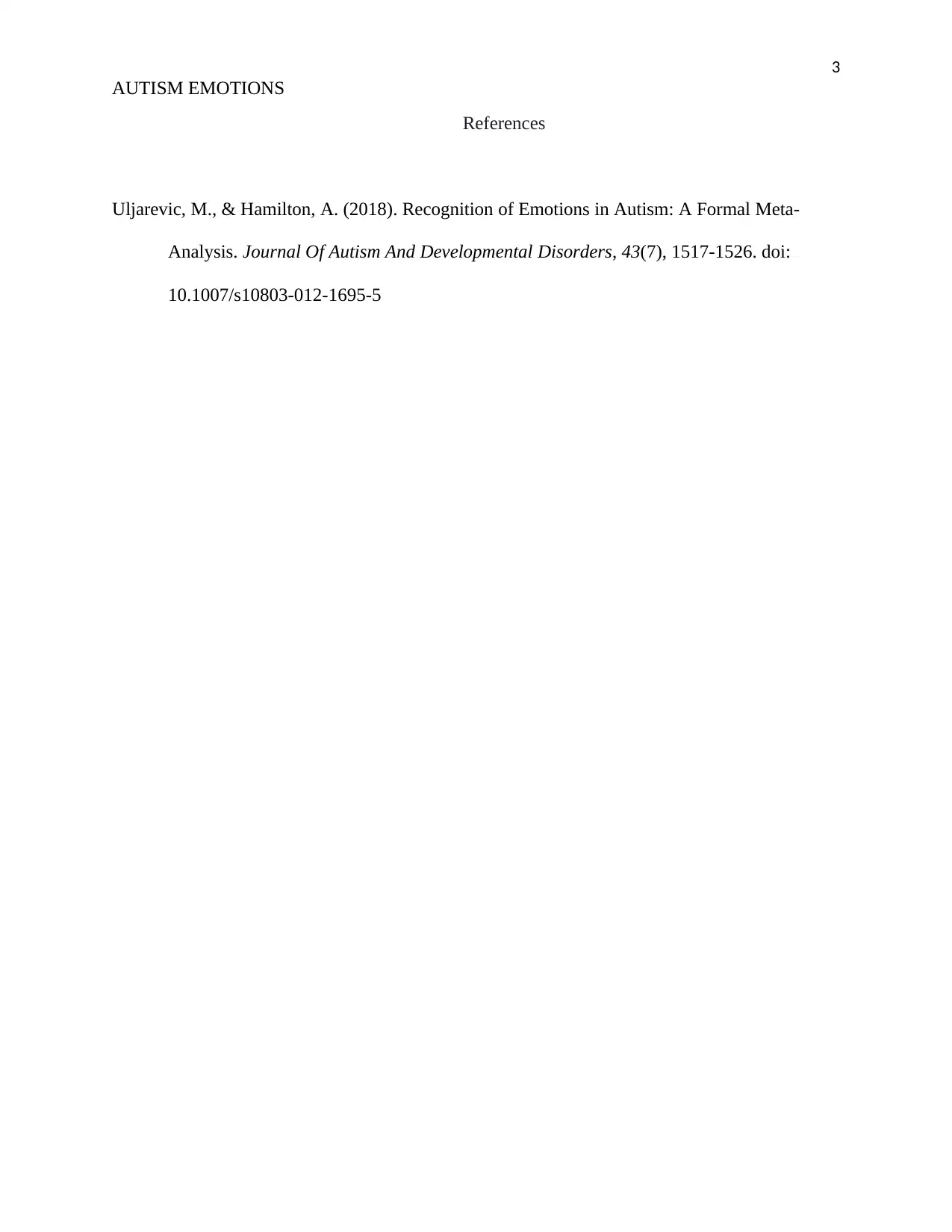Autism Emotions: Exploring Symptoms, Diagnosis, and Treatment Options
VerifiedAdded on 2022/09/28
|3
|403
|31
Report
AI Summary
This report provides a comprehensive analysis of autism emotions, delving into the symptoms, diagnosis, and treatment options. It highlights the challenges faced by individuals with autism, including difficulties with communication, socialization, and repetitive behaviors. The report discusses the diagnostic process, emphasizing the importance of early intervention. It also explores various treatment approaches, such as behavioral therapies, including applied behavioral analysis, and medications like Antipsychotics, Anticonvulsants, and Stimulants, used to manage associated conditions. The report references key research, such as the work of Uljarevic & Hamilton (2018), to provide a well-rounded understanding of autism emotions and their impact.
1 out of 3










![[object Object]](/_next/static/media/star-bottom.7253800d.svg)